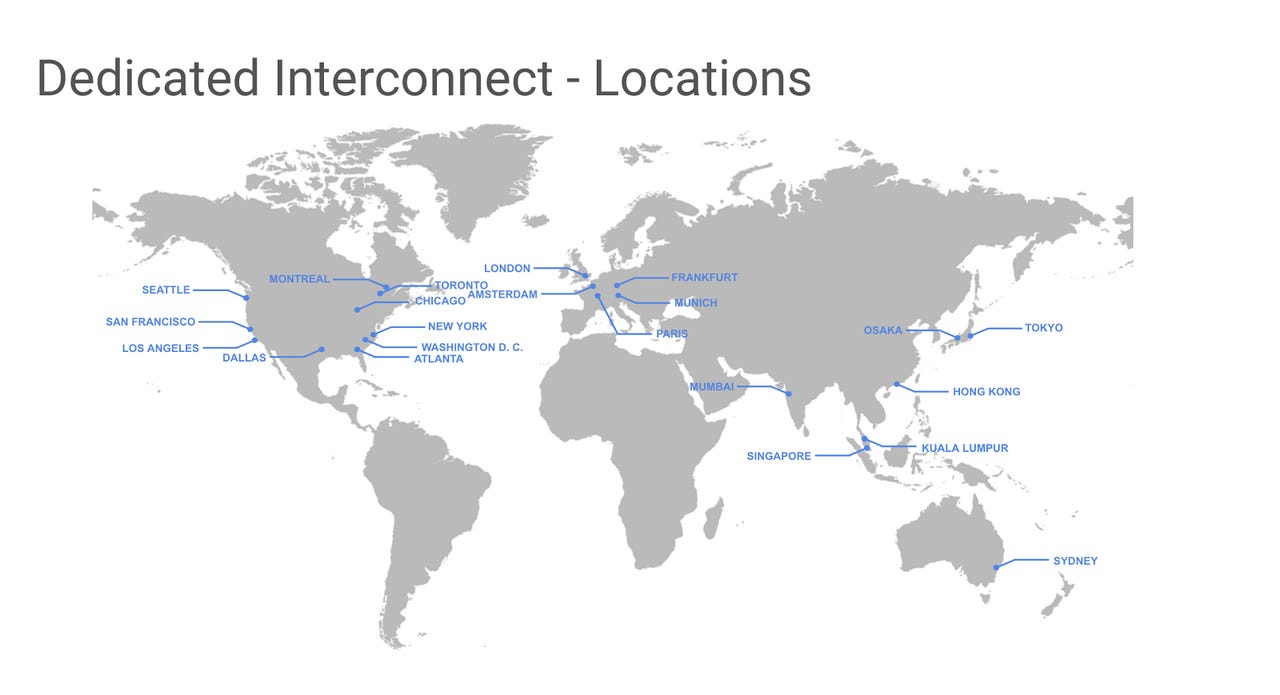Google updates Dedicated Interconnect with global routing, more locations


Google on Tuesday announced updates to Dedicated Interconnect, which is now in general availability. The ramped up offering helps Google reach customers looking to build hybrid cloud deployments.
Cloud
Dedicated Interconnect, unveiled in September, enables companies to extend their corporate datacenter network into Google Cloud, if their network can physically meet Google's network in a supported colocation facility.
As part of Tuesday's update, Google announced Dedicated Interconnect is available from four new locations: Mumbai, Munich, Montreal, and Atlanta. Google is also now working with Equinix to offer Dedicated Interconnect access in multiple markets around the world.
Additionally, Dedicated Interconnect is now covered by service level agreements and can be configured to offer a 99.9 percent or a 99.99 percent uptime SLA.
Dedicated Interconnect also now supports a new feature called Cloud Router Global Routing, which allows any on-premise network to access any subnet in all Google Cloud Platform (GCP) regions.
Google has been bolstering its hybrid cloud options lately, as it attempts to catch up with cloud leaders Amazon Web Services and Microsoft Azure. Earlier this month, Google announced a partnership with Cisco to help customers run and move their applications between Cisco-powered data centers and the Google Cloud Platform.
Previous and related coverage
Cisco, Google Cloud forge hybrid cloud partnership: Here's why they need each other
Google Cloud was flanked by AWS-VMware on one side of the hybrid cloud equation and Microsoft Azure on the other. Cisco's available partner base was dwindling. Enter the win-win.
Google Cloud Platform, Nutanix forge hybrid cloud strategic pact
Google Cloud and Nutanix joint customers will be able to manage on-premises and public cloud infrastructure as one unified service.